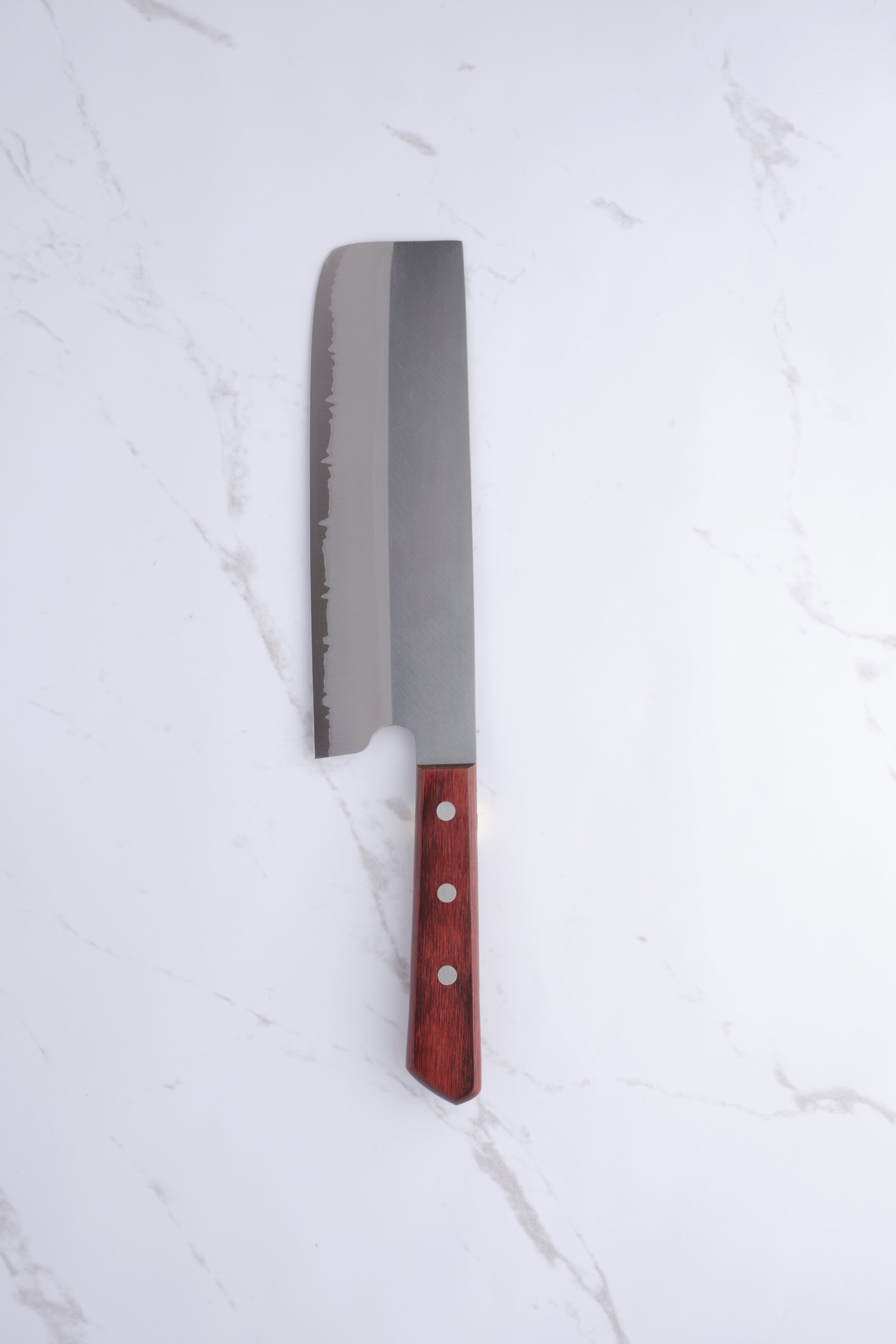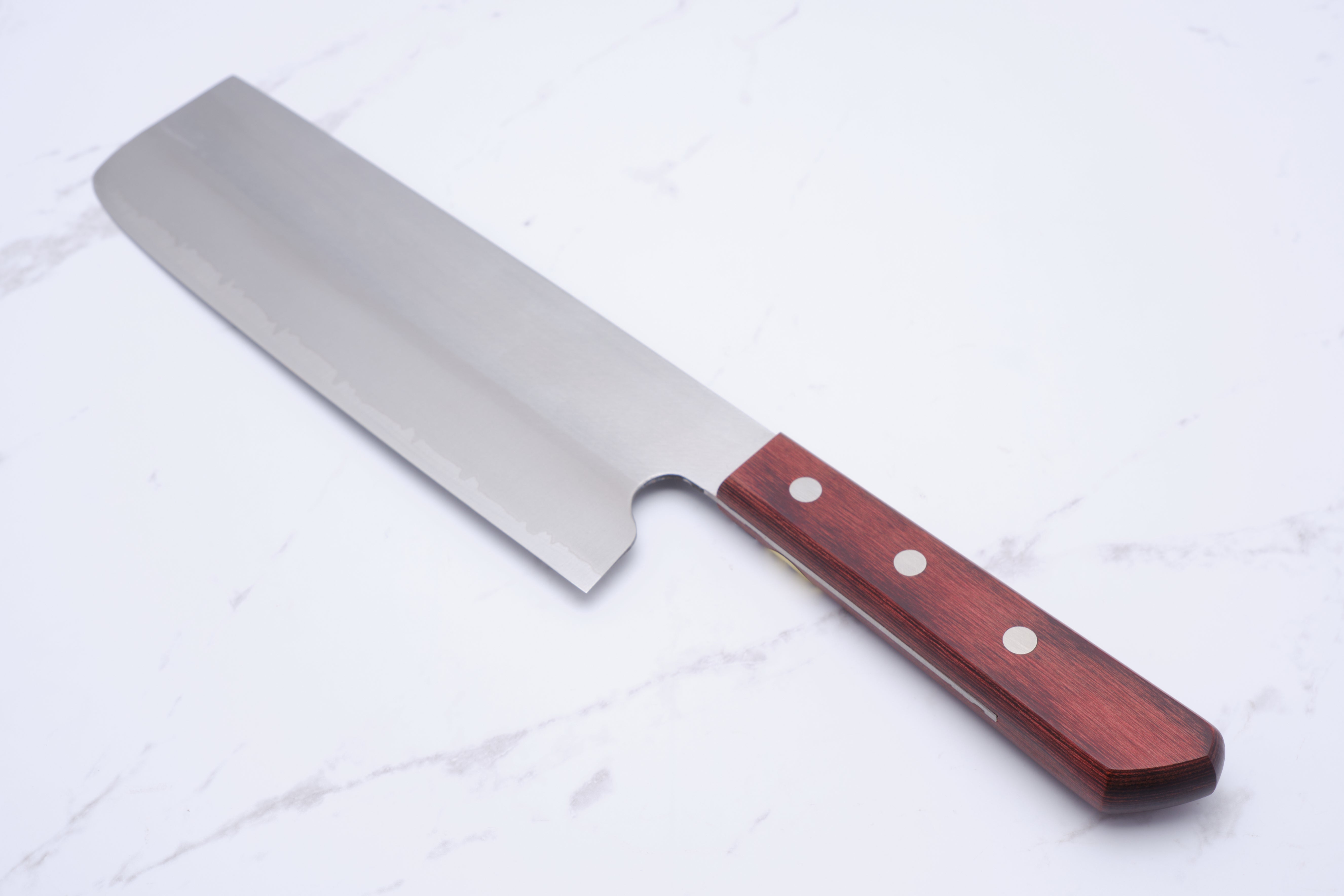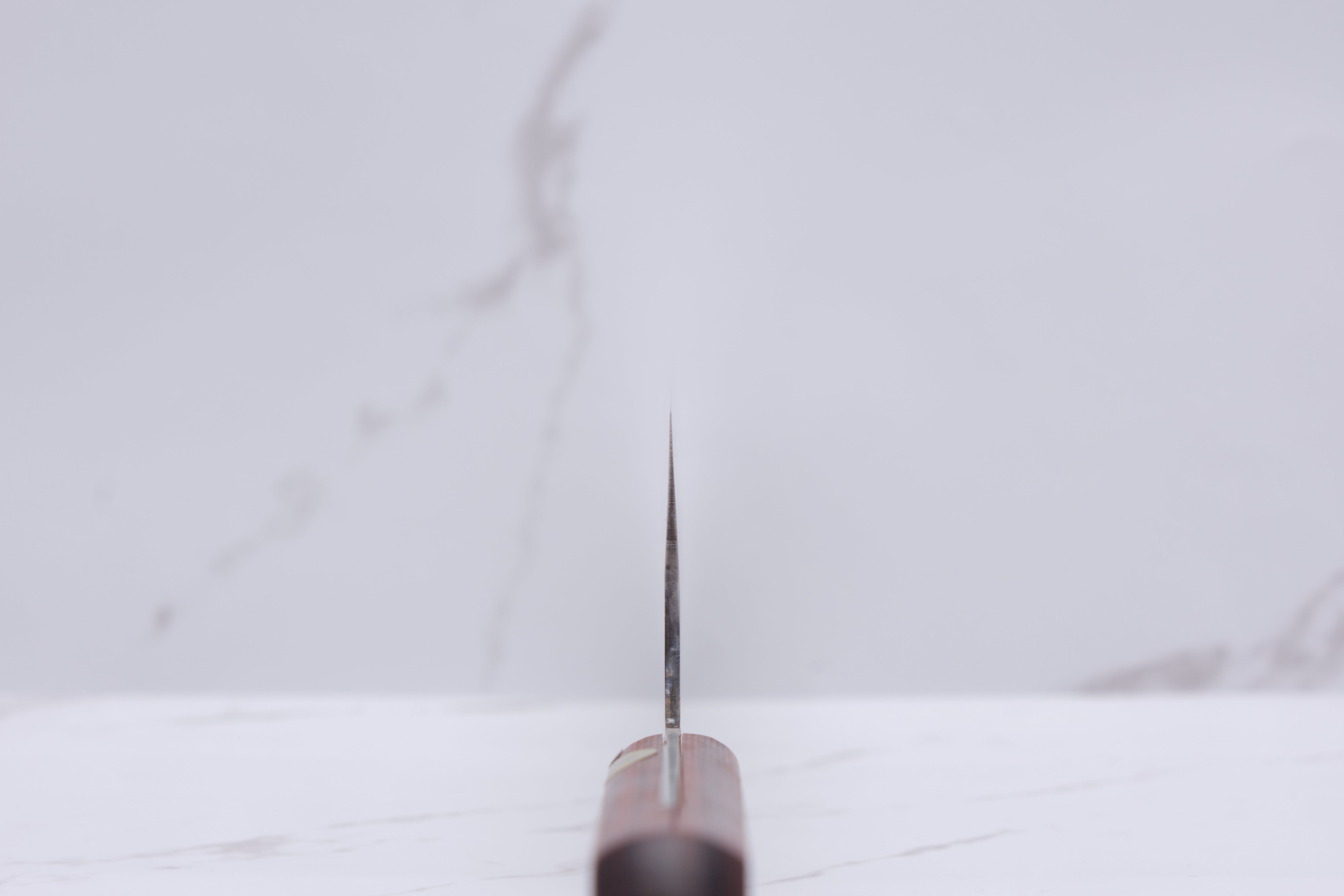







Sakai Kanechika 190 mm Sobakiri Aogami 2
Tax included.
Pickup currently unavailable at Foodgear Shop Torvehallerne

Sakai Kanechika 190 mm Sobakiri Aogami 2
Foodgear Shop Torvehallerne
Rømersgade 18
Torvehallerne Kbh - Hal 1
1362 København
Denmark
Sakai Kanechika comes from Sakai in Japan, and is sharpened by Fuji Hamono, who are good friends of the shop.
Mr. Fujii doesn't forge himself, he only grinds. This carefully thought-out division of labor ensures that, over the 50+ years he has been sharpening knives, he has acquired a fantastic competence. When we write grinding in this case, it is not just the finishing grind, but also what you can call ' the initial grind '. That is, from the raw, forged blade to the finished and sharp knife.
He is not the only one in his workshop, he has three students who need a minimum of 8 years to be able to call themselves master grinders.
This series is built in 3 layers with Aogami 2 as core steel, surrounded by stainless cladding. The handle is western style, and made of red pakka wood.
Aogami 2 is a carbon steel, and is in the category of so-called blue steel.. Aogami 2 is one of the carbon steels that can be hardened the hardest, and for this reason it keeps its sharpness for a really long time. However, it is also relatively easy to sharpen compared to stainless knives.
Fuji san calls this knife a Sobakiri, which is used to cut noodles. But due to the knife's thin grind, it can also be used as a nakiri.
The Nakiri is incredibly suitable and exclusively created for working with vegetables. Its large cutting surface means that there is good contact with the cutting board and can therefore work with both large and small vegetables. The very thin blade means that it is both light and cuts fantastically well.
| Brand/series | Sakai Kanechika |
| Type | Sobakiri/Nakiri |
|
|
Aogami 2 & Stainless Cladding |
|
|
50/50 |
|
|
Western Style in Red Pakka wood |
|
|
NO |
|
|
62-63 |
|
Specs (May vary slightly because the knife is handmade) |
Length: 190mm. Height: 58mm. Weight: 193g. Width out of the handle: 1.7mm. |
The knife must never be washed in a dishwasher, must not cut into hard objects such as bones, cartilage, bones and frozen objects as well as hard cheeses. Remember that it is a property of thin, hard metal that it can break.
Choose options










